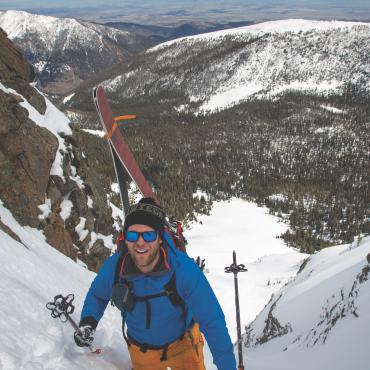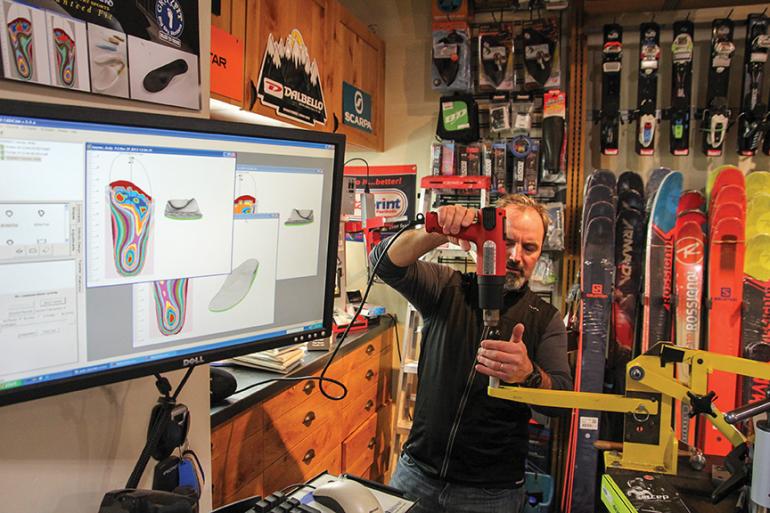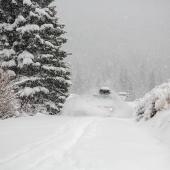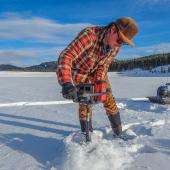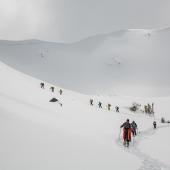If the Boots Fits
Your feet are worth the investment.
The reasons people need professional help fitting their ski boots are simple: performance and pain. Getting a precise fit—in which the shape of your foot is matched exactly by the shell and liner—not only provides the necessary stability for powerful skiing, but also reduces pressure and pain, and increases warmth and comfort. Andrew Schreiner, who co-owns Grizzly Outfitters in Big Sky, has been fitting boots for over 20 years—here’s my experience with the process and results of getting a proper fit.
When I walked into Grizzly with boots in-hand, Schreiner was already making notes. “You can learn a lot just by how someone walks and moves,” he says. “Do they pronate (roll ankles in)? How big are they? Do they favor one side? Are they athletic? These can all be easy indicators of what kind of boot—and what kind of fit—is going to be best.”
From there he asked to see my old boots, and we talked about my skiing: how many days a year, what kind of skis, preferred terrain and speed, my skiing background, any previous injuries—the list went on. Throughout this process, Schreiner was looking at my feet, feeling them, having me stand, jump, walk. “The goal of any boot-fitter isn’t to be a podiatrist,” he clarifies. “It’s to create a rock-solid foundation to put power to the ski.”
We identify my biggest issues—tailor’s bunions—that were previously exacerbated by poor-fitting boots. “We can deal with that,” he says, springing to his feet after carefully marking their location on my shell, taking into account the natural motion we experience while skiing. “We need to put your foot into the right position, or we can end up making it worse,” he says. He heats the shells and then punches out the problem areas slowly with an assortment of tools. Boot-fitting, it’s becoming clear, is equal parts psychology, anatomy, and craftsmanship.
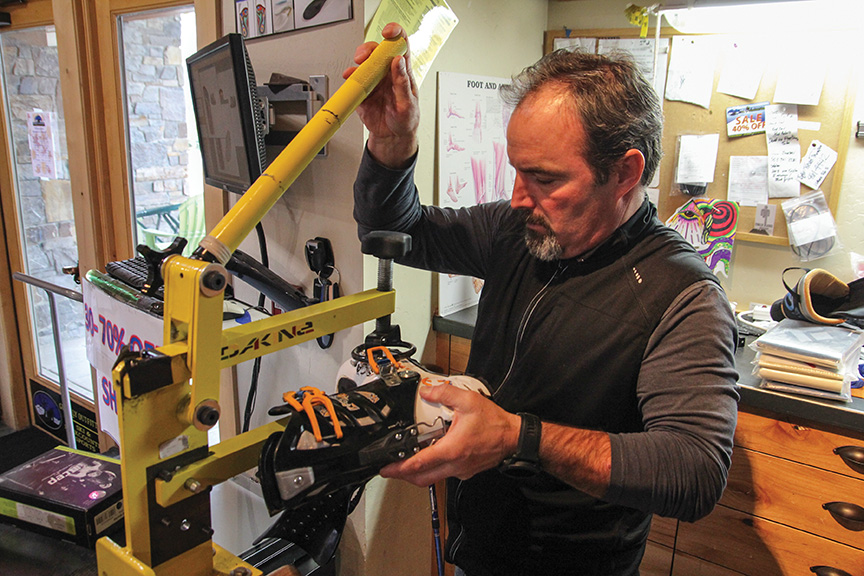 A master at his craft.
A master at his craft.
Schreiner suggests a custom footbed to help correct pronation on my right side—which is creating a slight twist that pushes my forefoot out under pressure. Not ideal when cranking a hard left turn. Using a state-of-the-art computerized Amfit system to map the contours of my foot, he mills a fully custom EVA footbed in-house, in about 45 minutes, and voila—no more pronation twist. “But not everyone needs a full custom foot bed,” Schreiner volunteers, “now that there are such good options off the shelf.” He shows me a wall of more economical options, along with an assortment of custom thermoformable Intuition liners, of which I’ve been a fan for years (and already have in my boots). “Many stock liners are just trash, “he declares. “Intuition is the way to go.”
We mold my Intuition liners with the new footbeds and shell modifications, and I immediately notice less uncomfortable pressure on the ‘ol bunions. Out on the hill, my foot feels locked into the heel pocket and more stable than ever, without pain. I also don’t experience the numbness and tingling I once did while touring in the backcountry, which is nice.
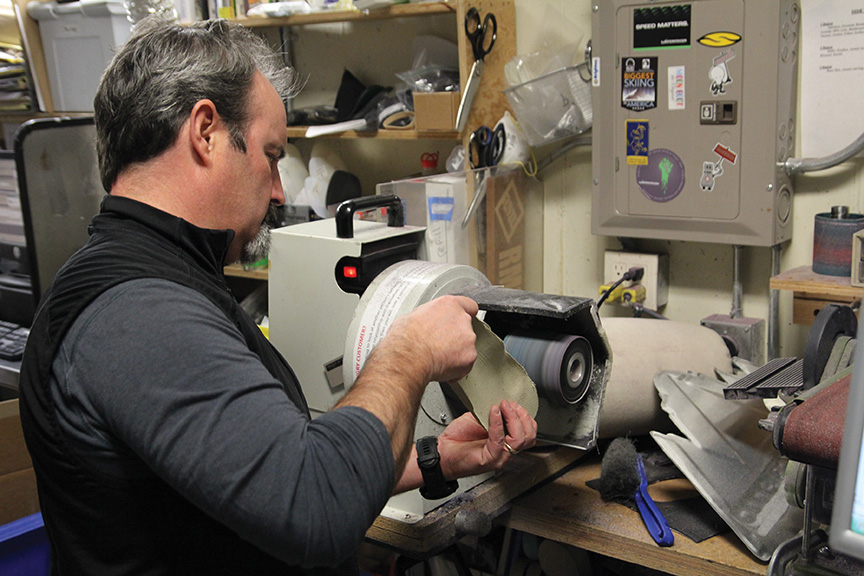 Happy feet mean a happy skier.
Happy feet mean a happy skier.
This process may not have made me a better skier, but it did make my skiing better—which shows just how important proper boot-fitting is to the overall skiing experience. Every reputable ski shop in southwest Montana has a trained boot-fitter, and all skiers would do well to avail themselves of this service.
Before You Go: Tips to Consider
1) Make an appointment. You won’t waste time waiting, and they’ll be prepared with boot options upon your arrival.
2) Buy new boots from your local fitter. It costs a bit more than online retailers, but the number-one problem Schreiner sees is improperly sized shells, which often leave fitters few options. Buying one pair of boots the
right way is WAY cheaper and easier than doing it twice (and Grizzly guarantees final fit).
3) Wash your filthy dogs and trim your nails. Seriously. Your boot-fitter has to touch that junk.
4) Bring EVERYTHING. Your old boots, your new boots, your skis, your socks—bring it all. Your old gear tells the story of how you ski, and how your boots should fit.
5) Wear THIN socks—thinner the better. Avoid textured patterns or anything that might create pressure points.
6) Be prepared (and happy) to spend a couple hours and a little bit of cash. This is a skilled process with real results—you’re not ordering a macchiato to go.
7) Bring your boot-fitter a sixer of something good—he or she just made you a more balanced, comfortable skier.

